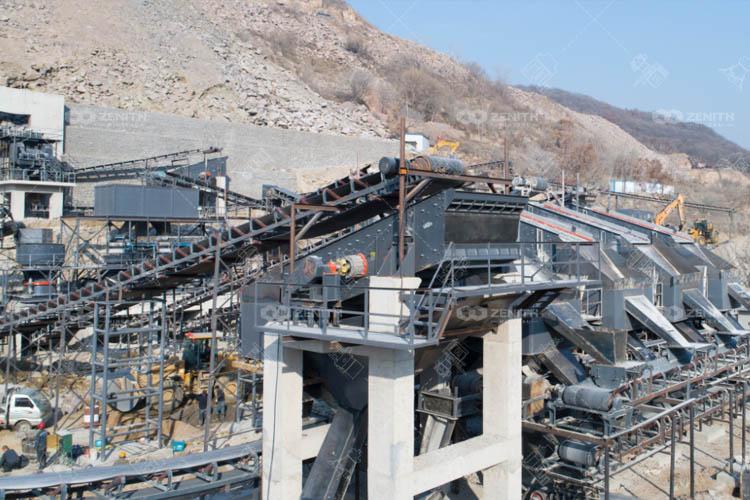The Key Steps in Operating a Successful Granite Crushing Plant

Granite is a type of natural stone that is widely used in construction and various other applications. It is an igneous rock formed from the slow crystallization of magma deep within the Earth's crust. Granite is composed mainly of quartz, feldspar, and mica, along with other minerals such as amphiboles and biotite.
Granite Crushing plant is a facility that processes granite into various aggregate products, such as crushed stone, sand, and gravel. It involves several stages of crushing and screening to produce the desired final product. Here is a general overview of the process involved in a granite crushing plant:
Primary Crushing: The granite material is initially fed into a primary jaw crusher, where it is reduced in size to a manageable size for further processing. The primary crusher may be a jaw crusher or a gyratory crusher, depending on the specific requirements and the hardness of the granite.
Secondary Crushing: The crushed granite from the primary crusher is then conveyed to a secondary cone crusher or impact crusher for further size reduction. This stage further breaks down the granite into smaller sizes.
Screening: After the secondary crushing stage, the crushed granite is screened to separate the different sizes of aggregates. Vibrating screens are commonly used for this purpose. The screened materials are then separated into different stockpiles based on their size and intended use.
Tertiary Crushing: In some cases, a tertiary crushing stage may be included to further reduce the size of the granite. This stage is typically performed by a cone crusher or vertical shaft impact crusher. It helps to produce finer and more uniform-sized aggregates.
Washing and Sorting (optional): Depending on the specific requirements and quality standards, the crushed granite may undergo a washing process to remove impurities and achieve a higher level of cleanliness. Additionally, the aggregates can be sorted by size using various techniques, such as air classifiers or water-based methods.
Stockpiling and Storage: The final products, including different sizes of crushed granite and washed aggregates, are stockpiled for storage and later use. Proper stockpiling techniques are essential to maintain the quality and prevent contamination of the aggregates.
Throughout the granite crushing plant process, it is important to ensure proper maintenance of the equipment, regular inspection of wear parts, and adherence to safety protocols. The specific equipment and configuration in a granite crushing plant may vary depending on factors such as the desired final product specifications, production capacity, and site conditions. Consulting with experts and following manufacturer guidelines are crucial for optimal performance and productivity.
- Whats New
- Shopping
- Wellness
- Sports
- Theater
- Religion
- Party
- Networking
- Music
- Literature
- Art
- Health
- الألعاب
- Food
- Drinks
- Fitness
- Gardening
- Dance
- Causes
- Film
- Crafts
- Other/General
- Cricket
- Grooming
- Technology

